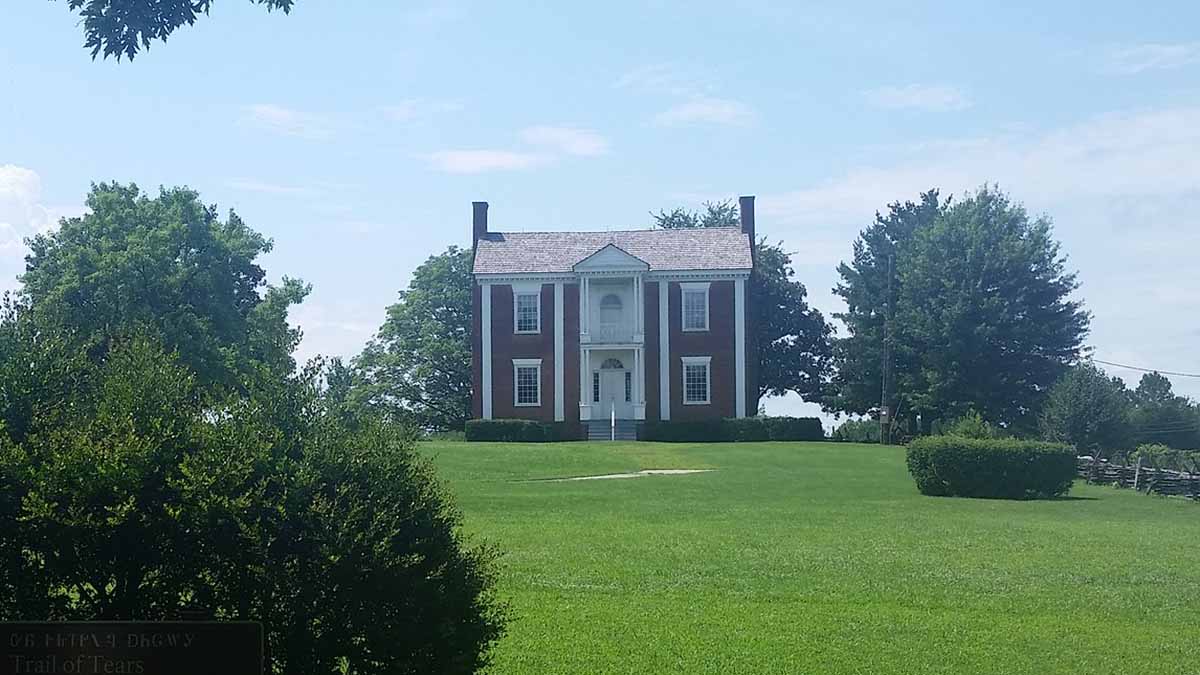
Cherokee County has been inhabited for thousands of years by Native Americans. Archaeological findings have shown that the Paleo-Indians occupied the region nearly 11,000 years ago. The Cherokee Nation later occupied the area and during the 1700s, they established self-sufficient self-governing towns. The Cherokee were considered a civilized tribe and adapted to white culture in an effort to maintain peace and keep their lands. In fact, one of the white customs they adopted was the process of establishing a government with a capital with they did at New Echota.
The discovery of gold and other valuable minerals found in mines such as Franklin, Pascoe, and Sixes drew white settlers to the area in search of fortune. The land in Northern Georgia has always been gentle on even the blackest of thumbs and there was great demand for such amiable land during the rampant growth of cotton agriculture.
Despite the Cherokee’s establishment of New Echota and their adoption of a constitution extending authority over their territory, government legislation passed an act in 1831 ordering “the immediate survey, distribution, and occupancy of the Territory” (Acts, Georgia, 1831, p. 141. (Act approved December 22, 1831). Four days later, another act was passed creating Cherokee County out of the Cherokee Nation’s entire territory. The newly enacted legislation extended the state’s jurisdiction over Cherokee territory, passed laws abolishing Cherokee laws and government, and started the process of seizing Cherokee lands that would later be divided into parcels and sold in a lottery to white Georgians. On December 3, 1832, an act was approved to divide the territory into ten counties: Cherokee, Cass (later named Bartow), Cobb, Floyd, Forsyth, Gilmer, Lumpkin, Murray, Paulding, and Union.
The Cherokee Nation sought protection from the Supreme Court (Cherokee Nation v. Georgia 1831) and even though the Supreme Court declared that the State of Georgia had violated the Cherokee Nation’s sovereign status and intruded on it’s treaty relationship with the U.S., President Jackson refused to enforce the court’s decision and continued to put pressure on the tribe to leave their lands.
Although the desire for the Cherokee to give up their land had begun in the early eighteenth century when European settlers moved into the tribe’s territory, it wasn’t until 1837 that the State of Georgia and the federal government forcibly removed them from their homes. Soldiers rounded up men, women, and children and sent them to local removal forts in Fort Buffington and Sixes. In 1832, those housed in the removal forts joined over 15,000 Cherokee on the Trail of Tears. Nearly 4,000 of those removed did not survive the journey to the reservation land in the west.
Etowah Valley became the industrial hub of north Georgia during the mid-1800s, producing valuable minerals including iron ore, copper, titanium, quartz, mica, granite, and marble. The bustling Cherokee County had in operation ten grist mills, fourteen saw mills, seven flour mills, and twelve disteries. The existing population at the time consisted of about 12,000 people. The county was prosperous in the years leading up to the Civil War with agriculture as its main industry. As custom in the rest of the South, whites purchased black slaves to labor the land and slaves made up 9% of Cherokee County.
During the Civil War, no major battles were fought in Cherokee County. However, the soldiers did forage the area for supplies which led to many small fights between the armies. Canton was burned in October 1864 and half the town was burned including the courthouse and the Etowah River Bridge.
At the end of the Civil War in 1865, the county’s enslaved blacks were granted their freedom and citizenship. Several newly freed slaves worked as sharecroppers on the same farms that they were slaves on and established black communities in Hickory Log near Canton. The Keith family were former slave owners and actually gave some of their land to their former slaves.
Between the end of the gold rush and the Civil War, life was rough for those who resided in Cherokee County. However, things improved greatly for people when the railroad line made its way into the bedraggled county, bringing new markets to both farmers and industrialists. When the railroad linked Woodstock to Canton and then to Ball Ground two years later, both farmers and mills flourished as they were able to sell their wares to larger markets. Trains were also responsible for the success of marble finishing plants in Ball Ground, Nelson, and Canton. The county saw a surge of growth due to its new prosperity and the population grew to over 20,000 by the 1920s.
While the majority of the country took a hit during the Great Depression, Cherokee County did better than most. Its economy improved slowly and the poultry industry that began during the Great Depression took off during World War II. Economic growth continued on through the 50s and 60s bringing great prosperity to Cherokee County’s citizens. The surging poultry industry created several jobs in hatcheries, feed stores, rendering and processing plants, and equipment manufacturers. The poultry industry was so big that Cherokee County was known as the “Poultry Capital of the World” by the late 1950s.
Cherokee County capitalized on another opportunity for growth in 1979 with the federal government’s construction of Interstate 575. The first stage of the new infrastructure connected I-575 to Highway 92 in Woodstock and opened up to drivers in 1980. The next section connecting to Highway 20 was completed and opened to the public in 1985. The last section to Pickens county was finished later. The new interstate opened up opportunities to residents in Cherokee County allowing them to work in Atlanta. This also resulted in more and more people relocating to Cherokee County. By the early 2000s, the county saw people coming in at the rate of one new resident every hour. The county currently has a population of 247,894 making it the seventh largest county in Georgia.
Source: LLoyd. G. Marlin – The History of Cherokee County.
